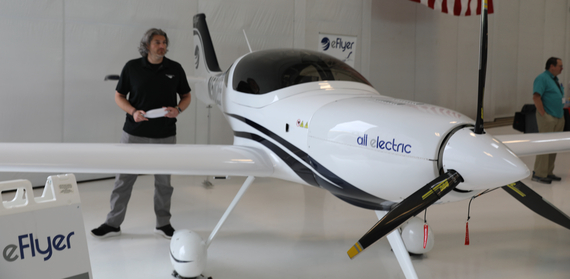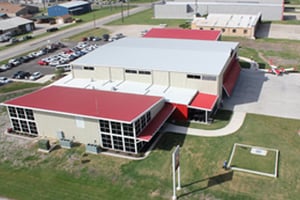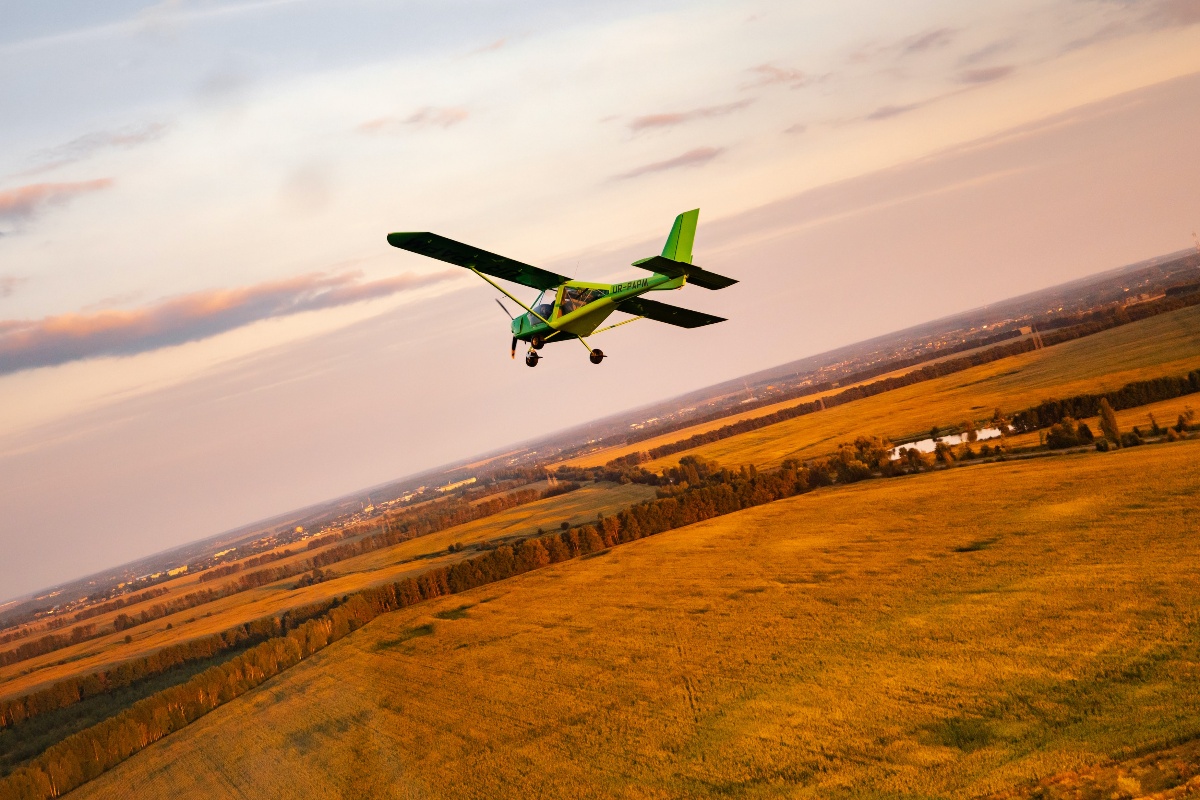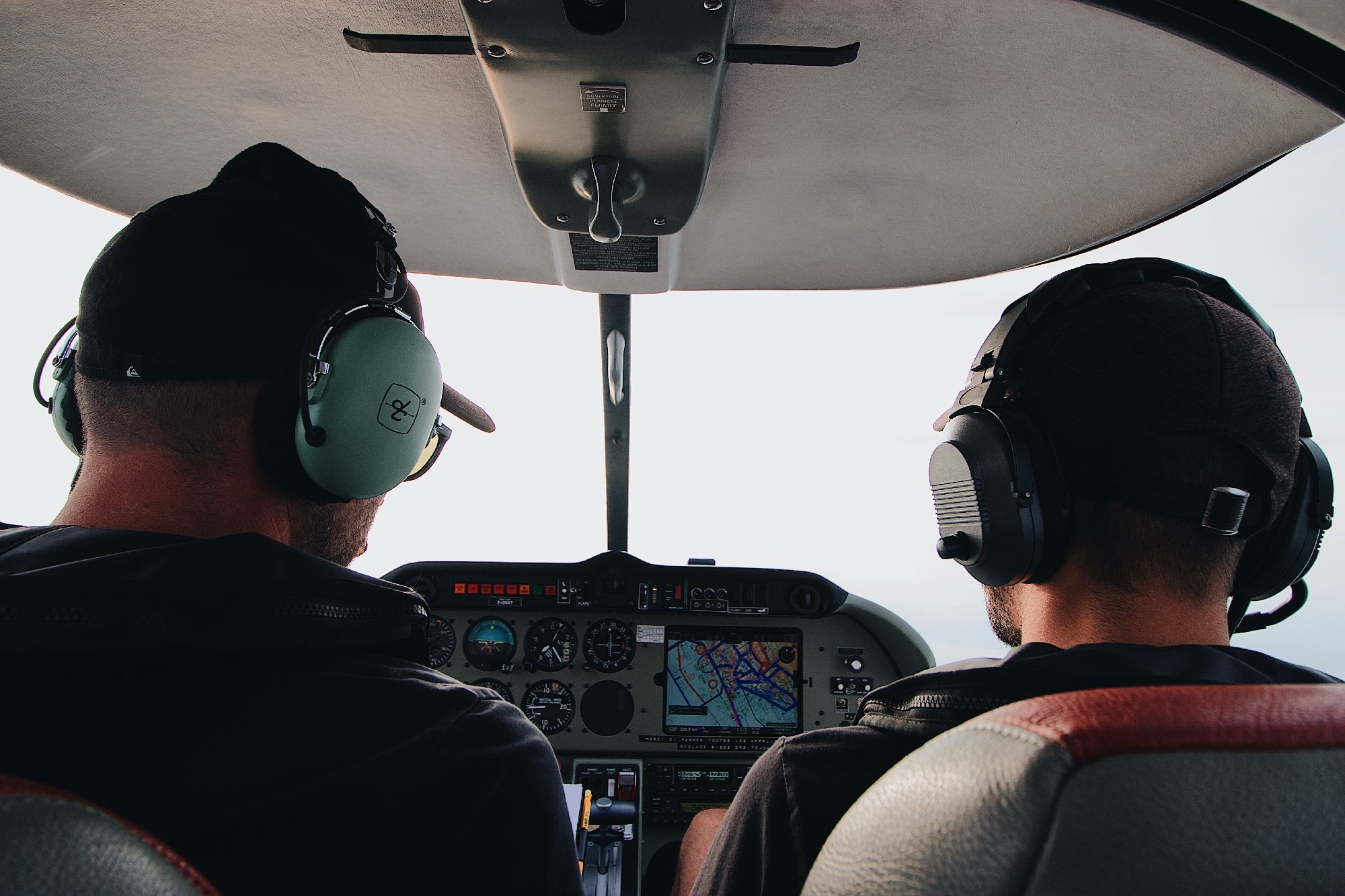Five Aviation News Stories Every Pilot Should Watch in 2020
While the humor in asking a pilot to forgo the 30,000-foot view isn't lost on me, a few of the stories in aviation this year might warrant it. Underneath all the media coverage of the 737 MAX and the pilot shortage, you'll find several subplots capable of shaping the years ahead in our industry. Here are a few we'll be taking a closer look at in 2020.
1. ADS-B (Fall)Out
In the movie Old School, there’s a scene in which a previously on fire Will Ferrell paces a men’s locker room in his underwear pleading with his colleagues to keep their composure. Sure, it's a weird and hilarious scene and an even weirder reference, but I imagine pilots with unequipped aircraft can relate to the sentiment right now: thrown to the fire, exposed, and just trying to keep their composure.
The Federal Aviation Administration (FAA) has promised enforcement action against pilots flying unequipped aircraft in ADS-B rule airspace, but it remains to be seen what that will entail. Pilots based in the United States are waiting curiously, and regulatory bodies around the world are waiting too.
In the European Union, ADS-B mandates won’t take effect until June 7th. Phase 1 of Nav Canada, Transport Canada’s ADS-B Out initiative, takes effect in January 2021. The Mexican Civil Aviation Authority, which planned to enact its ADS-B mandate at the beginning of 2020, decided to delay the requirements until January 2022.
It’s clear that regulatory bodies worldwide are prepared to wait and learn from the successes and failures of the FAA’s mandate. Can you blame them? It was only a couple of days into the new year when we found out that an airline, Bahamasair, failed to equip three of its 737s before the FAA’s deadline. The Canadian government also quickly uncovered how the FAA would treat unequipped aircraft. Two of the Royal Canadian Air Force’s Challenger 601 jets that operate in the United States will require exemptions.
While it sounds like both of these issues will be resolved, they seem to foreshadow the year ahead for the FAA. The ADS-B apocalypse will be avoided, but not without painstaking measures for the agency.
2. Flight Shaming
Scrutinizing the carbon footprint and the overall environmental impact of aviation isn’t new, but Time magazine's 2019 Person of the Year, Greta Thunberg, has put air travel front and center in the climate change conversation. As 2020 rolls on, I’m interested to see how far into the aviation industry flight shaming will extend before sustainable technology becomes more mainstream.
Will flight shaming reach general aviation?
Presumably, because it has the largest market in aviation, commercial aviation has been the primary target of the flight shaming movement to date. Yet, some industry analysts are predicting that flight shaming will hit private aviation in 2020.
If that’s the case, how will the GA industry respond? In a recent article, Forbes Aerospace and Defense Contributor Brian Foley predicts that companies in the business aviation industry could follow in the footsteps of airlines by “offer[ing] voluntary access to pay-as-you-go carbon taxes” or resort to old tricks like "tweak[ing] their ad copy and concoct[ing] PR stunts to demonstrate commitment, such as one-time flights using Sustainable Aviation Fuel (SAF).” However, as he notes and as we all know, large-scale usage of sustainable fuel and fuel-efficient aircraft is the only way to calm the movement.
How close are we to using electric aircraft and renewable energy for GA?
In my industry outlook for 2018, I wrote that “no longer should the question be ‘if’ electric propulsion becomes a viable solution for the aviation industry, but rather ‘when’ and ‘to what extent.’ Battery technology is the biggest hurdle to those answers.”
That still may be the case, but advances in lithium-ion batteries and electric motors are occurring rapidly. At our Migration Flight Training Conference in October, Bye Aerospace Founder and CEO George Bye discussed how the modern battery pack his company now uses in its eFlyer training aircraft provides over three hours of flight time. To boot, the eFlyer’s motor is only 57 pounds, 4 inches deep, and 17 inches in diameter, but it provides 90 kilowatts of torque in one rotation.
 The eflyer at Redbird Migration 2019 in Englewood, Colorado
The eflyer at Redbird Migration 2019 in Englewood, Colorado
Bye also mentioned a recent flight in which test pilots were at 10,000 feet, climbing 750 feet per minute, using just 70 kilowatts of power. So, at least for specific use cases in general aviation, the technology to make electric planes a viable option is already here. Lithium batteries have more energy density, and the size of electric motors is decreasing without compromising on performance.
However, regulatory approval is moving at a slower pace.
Innovation in the wake of the Boeing 737 MAX
The culture of innovation in aviation is at a crossroads right now. Many of today’s most exciting technologies have practical applications in aviation and aerospace—just take a look at the exhibitors at the annual Consumer Electronics Show (CES) in Las Vegas—but regulatory questions loom over most if not all of them. That’s to be expected with any new technology, but the 737 MAX fallout is amplifying consumer attention and, subsequently, the pressure within regulatory bodies to “get it right.”
Changes to regulatory oversight?
Much of the increased attention and pressure stems from criticism about the FAA’s system of approvals which allowed Boeing to implement its Maneuvering Characteristics Augmentation System (MCAS) into 737 MAX aircraft. Under current rules, Boeing handled certain certification tasks internally. Now, seemingly weekly, lawmakers are calling for the FAA to increase its oversight of aviation manufacturers. Whether it’s justified or not, manufacturers of electric airplanes and electric vertical take-off and landing (eVTOL) aircraft could be impacted in some capacity. As the FAA updates its approvals policies, anticipate some delays to the release of new technologies.
Prioritizing corrections over advancements
Understandably, the FAA’s attention is divided at the moment. While the agency has talented people working with manufacturers of new and exciting general aviation technologies, addressing public concern on other matters is a priority.
Lindsey McFarren, President of McFarren Aviation Consulting, spoke to this at Migration 2019. She explained that, while the FAA has flight standards and aircraft certification staff who are “excited about innovation” and are “partners” in what manufacturers are trying to accomplish, these individuals also “have a lot of hats” to wear at the moment.
While, ultimately, approval delays are just a road bump; the bump is a bit bigger than would’ve been expected at the beginning of 2019. We have the talent and technology to keep moving general aviation forward, but, presently, we might not have the people power.
3. Flight Sharing
Flight sharing, a term used to describe when private pilots share flight expenses with their passengers, has drawn interest from the aviation community for years. At the end of 2019, though, flight sharing entered the aviation news cycle.
On December 18, 2019, FlyOtto Co-Founder Rod Rakic announced that the company—along with its partner company OpenAirplane—would be shutting down before the new year. Despite building a platform that provided real-time pricing, a smoother booking experience, and that allowed travelers to book trips on efficient piston and turboprop aircraft, Rakic explains in his post that making FlyOtto sustainable would have required more capital than the company initially assumed. In Rakic’s words, “we were able to model an ambitious plan to scale into a big profitable business. It was a good plan. But without access to growth capital, it became impossible to get there.”
One day later, news broke of another hurdle for the flight sharing industry. BlackBird Air, another player in the space, received a letter from the FAA’s Assistant Chief Counsel for Enforcement, Naomi Tsuda, explaining that BlackBird should be operating under Part 135 regulations.
In the letter, the FAA concludes that “the pilots participating in BlackBird's platform and using its app are holding out and thus are engaged in common carriage. This conclusion does not apply to individual commercial pilots who are legally operating the flights for operators authorized to conduct operations under 14 C.F.R. part 135, or pilots who are legally operating under 14 C.F.R. §91.501.1."
The agency notes that "the exceptions from certification provided under 14 C.F.R. §91.501 only apply to large airplanes of U.S. registry, turbojet-powered multiengine civil airplanes of U.S. registry, and fractional ownership program aircraft of U.S. registry that are operating under subpart K of part 91 in operations not involving common carriage. Most of the aircraft offered on BlackBird's app appear to be outside of those requirements."
Are the regulatory hurdles necessary?
From a safety standpoint, the FAA’s stance on flight sharing is important. The agency wants to ensure that any pilot who transports paying passengers has the necessary training, is subject to drug and alcohol testing, and maintains an aircraft to the standards required for charter operations. Undoubtedly, some level of oversight is necessary to ensure the safety of passengers and pilots. But how much oversight is appropriate for a digital marketplace, and how much do we care about potential changes to regulation?
Social media support
Online, people have rushed to their keyboards to uphold the ideals of flight sharing in 280 characters or less. Making private aviation more accessible is a pursuit most travelers can get behind. However, there’s a big difference between defending flight sharing on the internet and actively contributing to its success in the real world.
Rakic makes a blunt comparison, explaining how “general aviation is a bit like teenage sex. Lots of people talk about it, even when few are doing it.” Regarding OpenAirplane, he goes on to say that, while the idea “won us praise, fans, and even super fans, the reality is that too few pilots took to the skies to make the operation sustainable.”
Despite the obstacles that the flight sharing industry currently faces, plenty of companies still are making a run at developing a viable service. However, without more public demand, a sustainable platform is unlikely. Flight sharing will go as far as the public wants it to go.
4. FBO Transparency
In late 2019, Redbird’s Founder and Co-Chairman, Jerry Gregoire, wrote an article outlining the reasons why we decided to close our FBO, Skyport. More than any piece we published last year, it prompted a flurry of reader emails—and from both sides of the aisle, pilots and FBO owners.
 The relationship between pilots and FBOs is mutually beneficial, but not without its challenges. Pilots get frustrated by high fuel prices and confusing "airport fees," particularly because the rates oftentimes feel purposefully undisclosed until after the swipe of a credit card. FBOs, on the other hand, can take issue with the parasitic approach of pilots who choose to taxi up, use the facilities, drink the free coffee, take a ride in the crew car, and depart without spending a dime.
The relationship between pilots and FBOs is mutually beneficial, but not without its challenges. Pilots get frustrated by high fuel prices and confusing "airport fees," particularly because the rates oftentimes feel purposefully undisclosed until after the swipe of a credit card. FBOs, on the other hand, can take issue with the parasitic approach of pilots who choose to taxi up, use the facilities, drink the free coffee, take a ride in the crew car, and depart without spending a dime.
This year feels like a tipping point—like the private complaints of pilots and FBOs might be discussed publicly. The Aircraft Owners and Pilots Association (AOPA) recently brought the conversation to light when it slammed the results of the Government Accountability Office's (GAO) audit of FBO pricing. Specifically, AOPA said that the report "failed to thoroughly address all aspects of federal grant requirements" and reflected "a complete lack of contextual knowledge of the industry and how it is intended to operate."
Undoubtedly, the scope of the report is a disappointment to general aviation organizations, which have been lobbying to make broad fee transparency commonplace for FBOs nationwide. The report focuses primarily on fuel pricing information, which mostly is already available, but pays less attention to the additional fees that are often at the core of pilots' complaints.
While more work needs to be done, the general aviation industry has taken steps to make all available and relevant FBO information more accessible and up-to-date. AOPA's airport directory is a helpful resource with which all general aviation pilots should be familiar. Foreflight also recently introduced a 'Fees view,' which integrates FBO pricing information from AOPA's directory into the most widely used EFB on the market. Wisely, the view allows users to comment on recent experiences for their fellow pilots to see.
5. Automation Technology
Last year was sandwiched by a few of the most important stories we’ve ever seen in aviation automation technology. After the 737 MAX crashes at the beginning of 2019, it was tough to predict many advances in automation technology on the horizon. With MCAS included in the coverage of those tragedies, delays in the release of other automation technologies seemed imminent.
For that reason, it was a pleasant surprise to see the rollout of Garmin’s automatic emergency landing system, Autonomi, before the end of the year. The system, as you’ve likely already read, is designed to be used in emergencies involving pilot incapacitation. At the push of a button, the system kicks in, steers the plane to the nearest airport squawking 7700, and lands the aircraft autonomously. It has the makings of a revolutionary technology for GA pilots and their passengers.
The new safe landing system will be integrated into the Cirrus SF50 Vision Jet and the Piper M600 turboprop beginning this year. While Garmin’s autoland technology has been in the works for years, the rollout probably feels quicker than most pilots would have imagined. This year, I’ll be interested to see how other automation technologies are treated. Will they be able to hit the market aggressively, or will they be delayed by pilot adoption, public perception, or the bandwidth of regulatory bodies?
Share this
You May Also Like
These Related Articles

The Three Underlying Causes of General Aviation Accidents

Simplify Your Instrument Rating by Mastering These 6 Tasks
